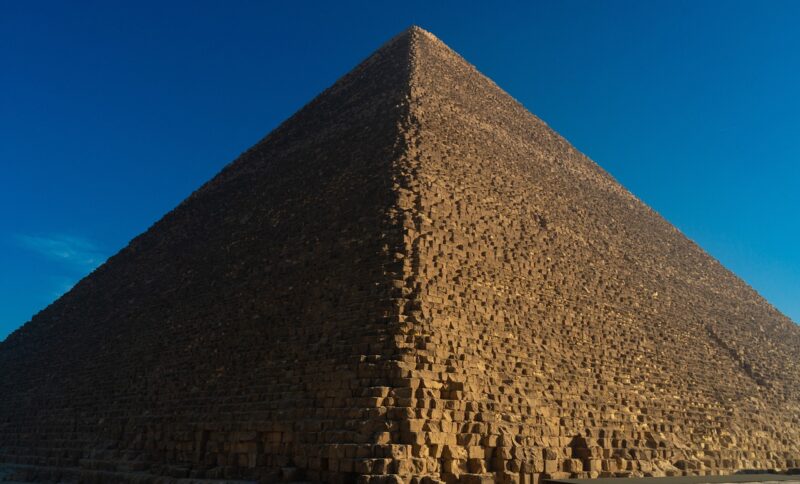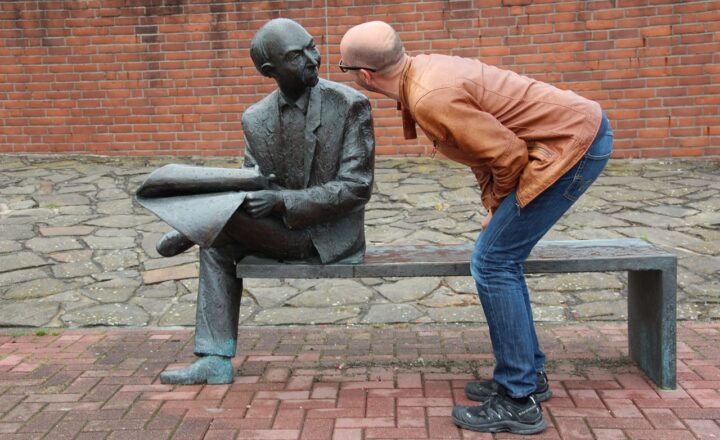
The Great Pyramid of Giza, one of the most remarkable architectural achievements in history, has captivated scholars, tourists, and curious minds alike for centuries. Standing tall at 481 feet (147 meters), it served as both a tomb for Pharaoh Khufu and a statement of the might of the ancient Egyptian civilization. In this article, we will explore the mysteries surrounding the construction of this incredible structure and its significance to ancient Egypt and beyond.
1. A Brief Overview of the Great Pyramid
The Great Pyramid is part of a complex of three pyramids located on the Giza Plateau near Cairo, Egypt. Built around 2580–2560 BCE during the Fourth Dynasty of the Old Kingdom, it is the largest of the three and the oldest among the Seven Wonders of the Ancient World still in existence today.
Originally constructed with an outer casing of white Tura limestone, which would have made it gleam in the sun, the pyramid’s core consists of millions of blocks of limestone and granite, creating a durable structure that has withstood the test of time. It is aligned with astonishing precision to the cardinal points of the compass, showcasing the advanced understanding of astronomy possessed by the ancient Egyptians.
2. Theories on How the Great Pyramid Was Built
The construction of the Great Pyramid has been shrouded in mystery, leading to various theories about how such a massive structure could have been erected with the technology available at the time. Here are some of the predominant theories:
2.1. The Workforce
One common misconception is that the Great Pyramid was built by slaves. In reality, it was likely constructed by a well-fed workforce of skilled laborers. Archaeological discoveries have revealed workers’ villages, storage facilities, and evidence that these builders were respected and well cared for. Estimates suggest that a workforce of around 20,000 to 30,000 people may have been mobilized for this monumental task.
2.2. The Ramp Theory
One of the most supported theories regarding the construction method is the ramp theory. This theory posits that workers built ramps made of mudbrick, limestone chippings, or earth to transport the massive stones to the higher levels of the pyramid. Different designs have been suggested, including straight ramps, zigzagging ramps, or a spiral ramp that wrapped around the pyramid.
The effectiveness of ramps seems plausible, particularly given the resources and manpower available to the ancient Egyptians. However, no direct evidence of the specific ramp construction methods has been found, leading to ongoing debates among historians and archaeologists.
2.3. Lever Systems
Another theory suggests that ancient Egyptians used simple lever systems to lift the stone blocks into place. Levers, combined with ramps, could have made it easier to position the massive stones as the pyramid increased in height. This method would have required relatively few materials and could exploit the mechanical advantage provided by levers, making it a feasible construction technique.
3. The Materials Used in Construction
The Great Pyramid was primarily built using limestone and granite. About 2.3 million blocks of stone were used—most weighing approximately 2.5 tons each, with some blocks weighing as much as 15 tons. Here’s a closer look at the materials used:
3.1. Limestone
Local limestone from the Giza plateau was used for the bulk of the pyramid. This stone was relatively easy to quarry and transport, making it the main building block of the structure.
3.2. Tura Limestone
The outer casing of the pyramid was made of high-quality white Tura limestone sourced from quarries across the Nile. This stone gave the pyramid its brilliant appearance. Most of the casing stones have since been removed, revealing the inner core.
3.3. Granite
Used primarily for the inner chambers, red granite was transported from Aswan, located more than 800 kilometers away. This required considerable ingenuity and effort, suggesting that the pyramids were not merely royal tombs but also representations of divine authority.
4. The Purpose and Significance of the Great Pyramid
The primary purpose of the Great Pyramid was to act as a tomb for Pharaoh Khufu. The pyramid was designed to facilitate Khufu’s journey into the afterlife, reflecting the Egyptian belief in life after death.
Beyond being a burial site, the Great Pyramid also served as a testament to the power, wealth, and capabilities of ancient Egypt. Its construction required an enormous organization, disciplined workforce, and highly advanced engineering skills, symbolizing a unified nation under a powerful ruler.
In addition to its practical functions, the Great Pyramid held significant religious and cultural meaning. It was believed to be a stairway to the heavens, leading the pharaoh’s soul to the afterlife. The pyramid’s alignment with the stars was also symbolic of the Egyptians’ connection to their deities.
5. Conclusion: The Legacy of the Great Pyramid
The Great Pyramid of Giza stands not only as the largest of all pyramids but as a symbol of the ingenuity and ambitions of the ancient Egyptians. It invites us to ponder the complexities of human creativity, organization, and perseverance that allowed a civilization to achieve such monumental feats. Despite centuries of exploration and research, many questions surrounding its construction and purpose still remain, leaving the Great Pyramid an enduring mystery that continues to inspire awe.
As we look to the future, the Great Pyramid remains a powerful reminder of our shared humanity, a challenge to dream bigger, and a beacon guiding us through the annals of history.
Further Reading
If you’re interested in exploring more about ancient Egypt and the Great Pyramid of Giza, consider diving into these resources:
- Archaeology Magazine: Who Built the Great Pyramid?
- History.com: The Great Pyramid of Giza
- National Geographic: Great Pyramid of Giza
With its mysteries unraveled and its significance understood, the Great Pyramid of Giza will surely continue to captivate and inspire generations to come.






